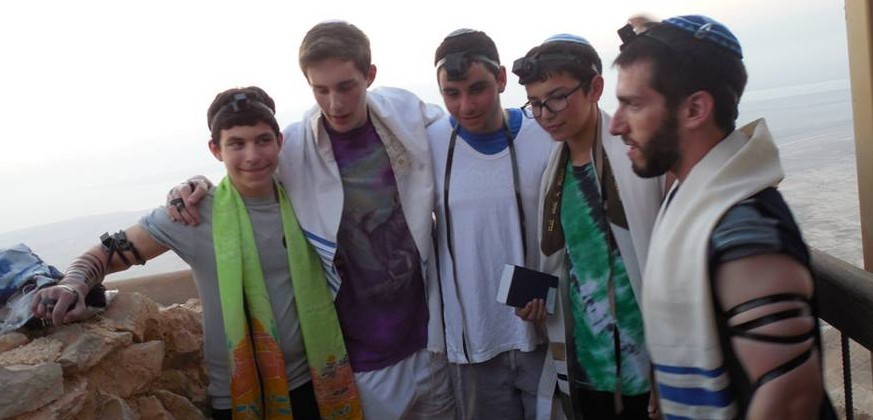Once every other month, Beth El Young Adults meets for Friday night services and dinner at Beth El Synagogue. The service, held in their new learning center, is separate from the main congregation’s service. For Rabbi Avi Olitzky, a Rabbi at Beth El and head of the Young Adults group, this separation is part of what makes the minyan successful. What factors make this endeavor a success? “First, the seating is more conducive to building community, as is the space we use,” Rabbi Olitzky says. “Second, it’s less intimidating than coming to a regular service – it’s coming to a young adults event. And third, it has the reminiscence of camp.”
Across America, huge Jewish religious institutions fill the landscape of Jewish religious observance. Shabbat services take place in giant sanctuaries fit to house High Holiday participation, and often look empty on Shabbat even with decent attendance. They service all needs of a community, and are there to support congregants in all life events. While communities like Beth El Young Adults do exist, in Middle America they are a rarity. In Israel, however, these mega shuls are few and far between. Israel, forced by the necessity of its size, has embraced and thrived in a concept I call the “Pop-up Minyan”.
A Pop-up Minyan is a small minyan that pops up for any number of reasons, and is often housed in school assembly rooms, bomb shelters, or even the garden of the Nature Museum. They often meet sporadically, offering select services, and they can pop up for any number of the following reasons:
- A synagogue has a split over fundamental issues, like the role of women
- A group of young people really like a synagogue, but move too far away to walk to it on Shabbat, so start their own imitation minyan
- The number of worshipers outgrows the size of the space, and so a minyan breaks in two
- A particular type of minyan does not exist in a given area, such as an egalitarian minyan, and there is enough critical support in the area
- Followers create a new minyan for their Rabbi or spiritual leader
What is the result of this plethora of minyanim? Israelis have options. It’s not unusual for an Israeli to have a minyan they go to on Friday nights, a different one for Saturday mornings, and then a third for weekday services closer to their house. They can choose whether they want to spend two hours singing through the entire P’sukei D’zimra on Shabbat morning, or sleep in until 10:00 and go to the ‘Late Late Minyan’ that still ends by noon. They can choose whether they daven with mixed gender seating, or whether they want a mechitza separating men and women. They can choose whether they want a Bat Mitzvah girl leading their service, or a spiritual leader with dozens of years of experience. This variety allows Israelis to connect to prayer in whatever way they prefer.
There’s no reason why we can’t create these communities in our home towns. Whether they exist as separate minyanim under the roof of a synagogue, or are started from the grassroots and exist in someone’s living room, we need to get over the fear that we might dilute talent or attendance by offering multiple options. When we develop new leaders that can engage a new segment of the Jewish population, we invest in the future of our communities while diversifying the options a synagogue or community can provide. And as Rabbi Olitzky told me, “Meeting people where they are is one of the ways we keep Judaism relevant and meaningful.”
If you glanced through TC Jewfolk’s High Holiday guide, you may have noticed the beginning of this trend. Little minyanim have begun to pop up, and I anticipate both their number and frequency of prayer to continue to increase, particularly as young Jews are looking for more meaningful prayer experiences. But this innovation need not stop with prayer experience. Let’s extend this idea of a minyan for everyone to embrace and inspire the young entrepreneurs in our community to create new Jewish organizations that can service different segments of the population. I believe there is a market for “alternative” Jewish experiences, be it Jewish dancing, meditation, adult and family learning, intensive Hebrew speaking groups, or even someone who connects Jews with an idea to people that can help make it happen across the world. If a person loves what they’re doing and is good at it, people will recognize this and be naturally drawn to them, deepening their own Jewish experience.
While we run the risk of fragmenting the Jewish community, I think the risk of holding the status quo is much worse. Jews in great numbers are dissatisfied with Judaism in their lives, and we need to start inspiring them by tailoring Jewish experiences to the things they love to do. By doing so, we create entryways to Jewish practice and a lifelong desire for Jewish learning. And that’s exactly what the Jewish community needs.


